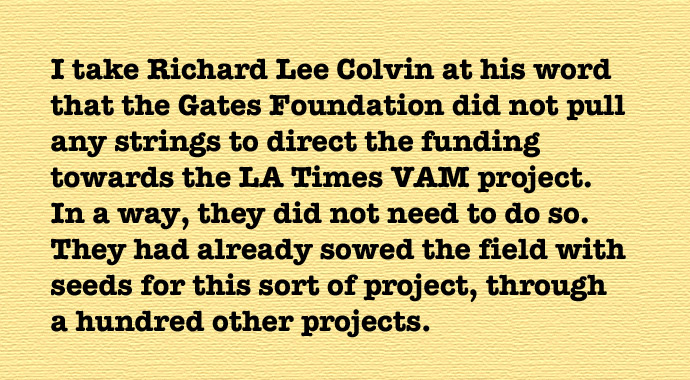Brown Demands Additional Federal Oversight of Ohio’s Charter Schools Following Reports Exposing Their Failures | Press Releases | United States Senator Sherrod Brown:
Brown Demands Additional Federal Oversight of Ohio’s Charter Schools Following Reports Exposing Their Failures
$30 Million in Taxpayer Dollars Was Spent on Now-Defunct or Non-Existent Ohio Charter Schools
WASHINGTON, D.C. – Following a report that uncovered attendance rates of less than 50 percent at some dropout recovery and prevention charter schools – along with areport that exposed Ohio’s misuse of charter school grant funds – Sen. Sherrod Brown (D-OH) today urged additional oversight of Ohio’s charter school sector. In a letter to U.S. Department of Education (ED) Secretary John King, Brown requested that ED also investigate how the academic performance and closing rate of Charter School Program (CSP) grant recipients in Ohio compares to CSP grant recipients nationwide, and, upon disbursement of a $71 million federal grant to the state, that ED appoint a special monitor to review each expenditure Ohio makes of the grant to ensure that funds are being spent for their intended purpose.
“The lack of oversight of Ohio’s charter schools disadvantages students and wastes taxpayers’ money,” Brown said. “I’m grateful the U.S. Department of Education is taking steps to address this scandal but the failures of Ohio’s charter school sector require an additional level of scrutiny. By increasing accountability and transparency, we can ensure that the funding awarded to Ohio will be spent on educating students, not fraud and abuse.”
In October 2015, amidst reports that certain charter schools in Ohio are misspending taxpayer dollars and falsifying data, Brown led members of the Ohio delegation in a lettercalling on ED to strengthen accountability and transparency for Ohio’s charter schools. The members of Congress asked ED Secretary Arne Duncan to clarify how ED ensured that falsified data was not used to evaluate an Ohio grant application and to take steps to ensure that the funding awarded to Ohio will be used appropriately. In response, ED asked Ohio for further information regarding their grant application and the state’s charter school sector and announced that they would not approve any expenditures by ODE of the $71 million in CSP funds awarded in September 2015 until they were satisfied that Ohio had adequate controls in place in order to administer these funds appropriately.
In July 2015, Brown introduced the Charter School Accountability Act – parts of which were included in the Senate-passed Every Child Achieves Act, legislation to reauthorize the Elementary and Secondary Reauthorization Act. The bill would strengthen charter school accountability and transparency, prevent fraud, and increase community involvement.
June 20, 2016
The Honorable John King
Secretary
U.S. Department of Education
400 Maryland Avenue, SW
Washington, DC 20202
Dear Secretary King:
I write regarding the Department of Education’s (ED) continued engagement with the Ohio Department of Education (ODE) about the $71 million September 2015 Charter School Program (CSP) grant awarded to the state. While I was encouraged to see that ED has not disbursed this money, has placed special conditions on the grant, and has engaged in multiple fact finding efforts with ODE, I remain concerned regarding the performance and oversight of the state’s charter school sector. It is incumbent upon ED to take additional steps to increase oversight, accountability, and transparency before this grant money is disseminated.
Last month, the Charter School Accountability Project published a report titled “Belly Up: A Review of Federal Charter School Program Grants” which analyzed the use of CSP grant dollars in Ohio’s charter schools. This report found that during the CSP’s 20 year history Ohio has received $99.6 million in CSP funding, a number surpassed by only Florida and California. Of the 292 Ohio charter schools that received this funding, over one-third have closed or never opened, meaning that almost $30 million in taxpayer dollars was spent on now-defunct or non-existent schools. Nearly $4 million in CSP funds was given to 26 Ohio charters that never opened.
The dismal state of the Ohio charter school sector has been further demonstrated by Ohio State Auditor Dave Yost’s May 2016 report regarding poor attendance at many of the state’s charter schools. Yost’s report highlighted problems with ODE’s oversight of attendance reporting and found particular problems with the attendance reports at drop-out recovery prevention charter schools, some of which had attendance rates of less than fifty percent during the surprise inspections. He further found that while the Ohio General Assembly has taken action to reform charter schools, ODE still has significant weaknesses in evaluating the effectiveness and reliability of the charter schools sector. He went on to state that ODE was "among the worst, if not the worst-run state agency in state government."
In your November 2015 response letter to the members of the Ohio Congressional delegation, you outlined a number of steps ED has taken and will continue to take to verify the accuracy and completeness of ODE’s grant application. I appreciate these steps, but more must be done to provide order to the state’s chaotic charter school sector. In light of this report, I ask that you examine the performance of Ohio charter schools who have received CSP grants to determine whether grant recipients are failing or closing at a higher rate than those in other states and how the academic performance of CSP grant recipients in Ohio compares to CSP grant recipients nationwide. I further ask that when Ohio has satisfied all necessary conditions for this grant money to be released that you appoint a special monitor to review every expenditure made pursuant to this grant in order to ensure that all funds are being spent for their intended purpose.
Ohio’s current lack of oversight wastes taxpayer’s money and undermines the ostensible goal of charters: providing more high-quality educational opportunities for children. There exists a pattern of waste, fraud, and abuse that is far too common and requires extra scrutiny. Federal investment in high-quality education is important and funds from the most recent CSP grant could greatly benefit students in Ohio if spent appropriately. This, however, would require that only high-quality operators with a history of student success have access to these important resources. Such an approach would include greater scrutiny of taxpayer spending and detailed analysis of academic performance.
I ask that you keep me and my staff apprised with your evaluation of ODE’s application for CSP funding and the subsequent disbursement of funds.
Big Education Ape: Ohio Congressman questions Arne Duncan’s $32 million charter grant - The Washington Post - http://go.shr.lc/28KseLj
Big Education Ape: Ohio’s charter chaos - Toledo Blade - http://go.shr.lc/28KspGv
Big Education Ape: Shame on the Ohio House for pushing off action on critical charter school reform bill:http://bit.ly/1MjatQZ
Big Education Ape: Will John Kasich Stand Up to the Republican Donors Taking Billions from Ohio’s Charter Program? ... http://bit.ly/1MjauVd
Big Education Ape: Could Charter School Scandal Weaken The Kasich Campaign? | John A. Tureshttp://bit.ly/1MjaxAg


















